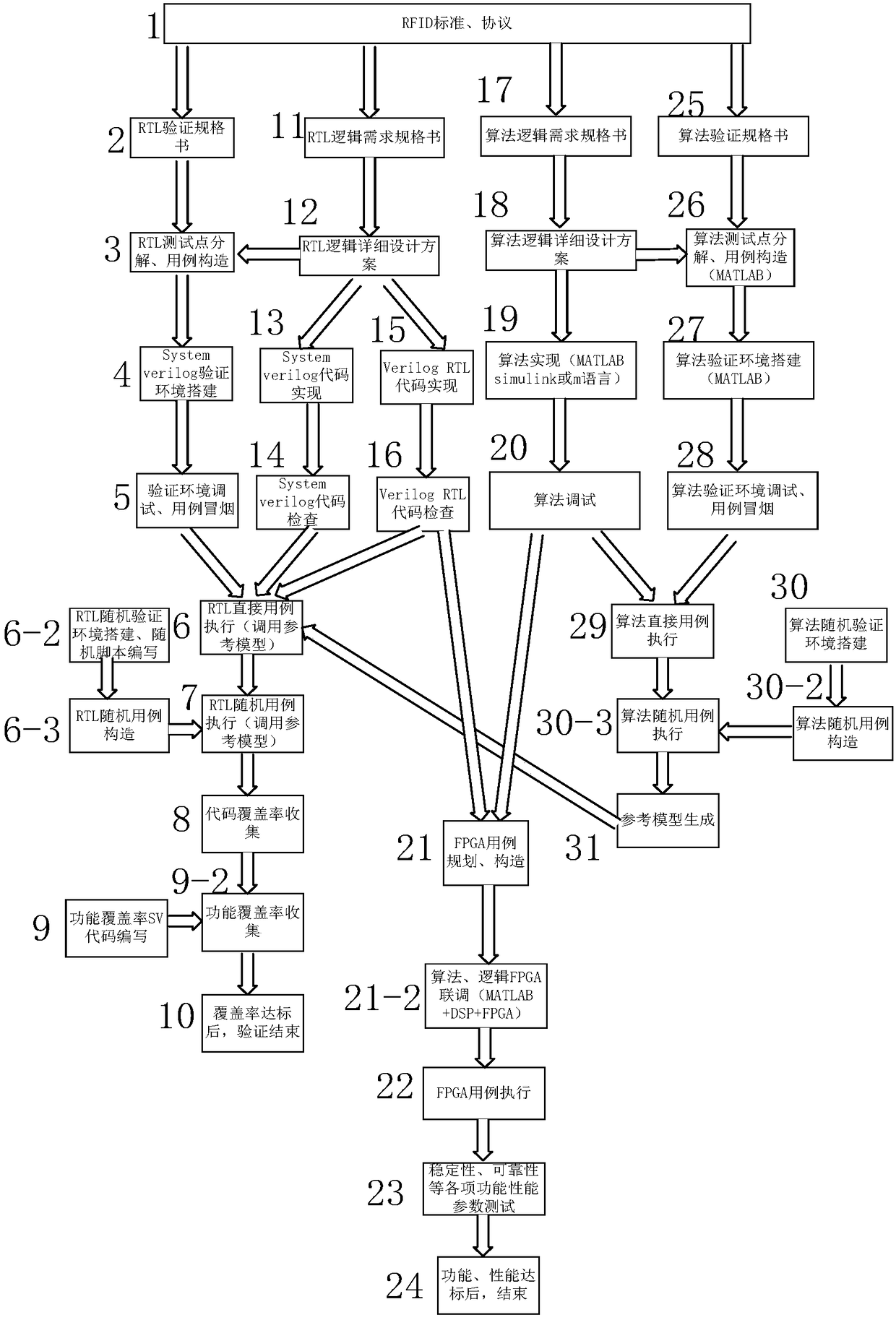A Design Verification Method for Passive Tag Chip
A design verification and passive tag technology, which is applied in the field of passive tag chip design verification, can solve problems such as imperfection, code coverage and function coverage that are difficult to meet the requirements of filming, difficult positioning, etc., and achieve an improved success rate Effect
- Summary
- Abstract
- Description
- Claims
- Application Information
AI Technical Summary
Problems solved by technology
Method used
Image
Examples
Embodiment Construction
[0044] figure 1 As shown, a design verification method for a passive tag chip is disclosed, including the following steps:
[0045] Step (1), determine the RFID standard protocol to determine the various functions and performance indicators to be achieved by the RFID; wherein, the above-mentioned RFID standard protocol can be formulated by the state or by the RFID industry.
[0046] In step (2), after the RFID standard protocol is determined, the logic verification engineer begins to write the RTL (RegisterTransferLevel register transfer level circuit) logic verification specification. When writing, it is necessary to refer to the logic detailed design plan written by the logic design engineer in step (12), and the RTL The verification specifications in the logic verification specification must cover all the functions and performance indicators in the standard protocol of step (1); after the logic verification specification is written, it needs to be reviewed by logic and algo...
PUM
 Login to View More
Login to View More Abstract
Description
Claims
Application Information
 Login to View More
Login to View More - R&D
- Intellectual Property
- Life Sciences
- Materials
- Tech Scout
- Unparalleled Data Quality
- Higher Quality Content
- 60% Fewer Hallucinations
Browse by: Latest US Patents, China's latest patents, Technical Efficacy Thesaurus, Application Domain, Technology Topic, Popular Technical Reports.
© 2025 PatSnap. All rights reserved.Legal|Privacy policy|Modern Slavery Act Transparency Statement|Sitemap|About US| Contact US: help@patsnap.com

